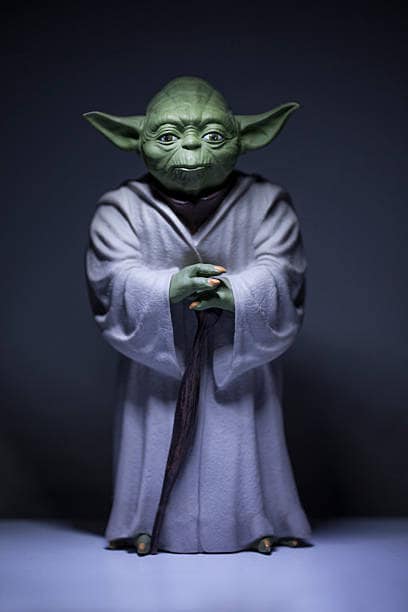Blog
Hasaan Ibn Ali (born William Henry Langford, Jr.; May 6, 1931 – 1980) was an American jazz pianist and composer.
Ibn Ali was strongly influenced by Elmo Hope, and his playing was rapid and intense, retaining a sense of rhythm even when his style became increasingly unconventional. Only one recording of his playing – The Max Roach Trio Featuring the Legendary Hasaan – was released in his lifetime. Ibn Ali built a reputation in Philadelphia, where he influenced musicians including John Coltrane, but he remained little known elsewhere.
Hasaan Ibn Ali was born William Henry Langford, Jr. in Philadelphia on May 6, 1931. His mother was a domestic worker. In 1946 (aged 15), he toured with trumpeter Joe Morris‘s rhythm and blues band.In 1950, he played locally with Clifford Brown, Miles Davis, J. J. Johnson, Max Roach, and others. Based in Philadelphia, Ibn Ali freelanced and acquired a reputation locally as “an original composer and theorist”, in musicologist Lewis Porter‘s words. The pianist performed with Horace Arnold in New York City in 1959, and again in 1961–62, in a trio with Henry Grimes.
more...Denys Justin Wright (6 May 1924 – 8 February 1992), known professionally as Denny Wright, was a British jazz guitarist.
A session musician for many years, Wright frequently acted as arranger and “fixer” for recording sessions. He was a prolific jazz and orchestra composer. He led many bands, from small ensembles to night club bands to orchestras. He worked with Latin American and Jamaican bands, including Kenny Graham‘s Afro-Cubists and Mike McKenzie‘s Quartet. He played with the Carl Barriteau orchestra, the Decca Recordshouse band under Phil Green, and occasionally the Glenn Miller band. Wright was voted the 1980 BBC Jazz Society Musician of the Year.
During his career he worked with Stéphane Grappelli, Lonnie Donegan, Johnny Duncan, Digby Fairweather, Ella Fitzgerald, Ken Snakehips Johnson, Billy Eckstine, Fapy Lafertin, Russ Conway, Biréli Lagrène, Humphrey Lyttelton, Nigel Kennedy, and George Shearing.
Although best known as a guitarist, his favourite instrument was piano, the only musical instrument he would play at home. Travellin’ Blues by Johnny Duncan and the Bluegrass Boys features Wright’s piano-playing.
more...In 1975 The Powderhorn Puppet Theater later to become In the Heart of the Beast Puppet and Mask Theater launched the first Mayday Procession and Event in Powderhorn Park. I worked with HOBT starting in 1985 touring to Sweden and Denmark. Previously I had done one of the first Drum Jams on Mayday in Powderhorn park in or around 1974 prior to HOBT.
Mentored by Bread and Puppet, HOBT became not only a hallmark national puppet company but a channel for social activism and social justice. And also setting a mark in artistic and community innovation across the USA attracting up to audiences of 20 to 30,000 attendees. I had probably worked on between 30 and 40 Mayday celebrations marching in the Parade with the Community Band and working as Cue Director for the Mayday Ceremony, along with most often featuring some of my ensembles premiering the MAROONS starting in the late 80’s. Later featuring Positive Vibrations, the Beau Koo Jacks, The Candlestyx, Cleo Patrix, guest artists and much more.
2019 was the final year Mayday was hosted by HOBT with minimal funding and also diminished in tone. So Mayday metamorphosed prior to the pandemic and became suddenly very slightly attended. HOBT changed hands with many artistic mentors stepping down and retiring their decades long devotion to Mayday.
Today the Twin Cities community has resurrected Mayday, not like what it once was but anew and determined to continue the awesome tradition of a Celebration of our local culture and the diversity and the embracing of all nations uniting as one community.
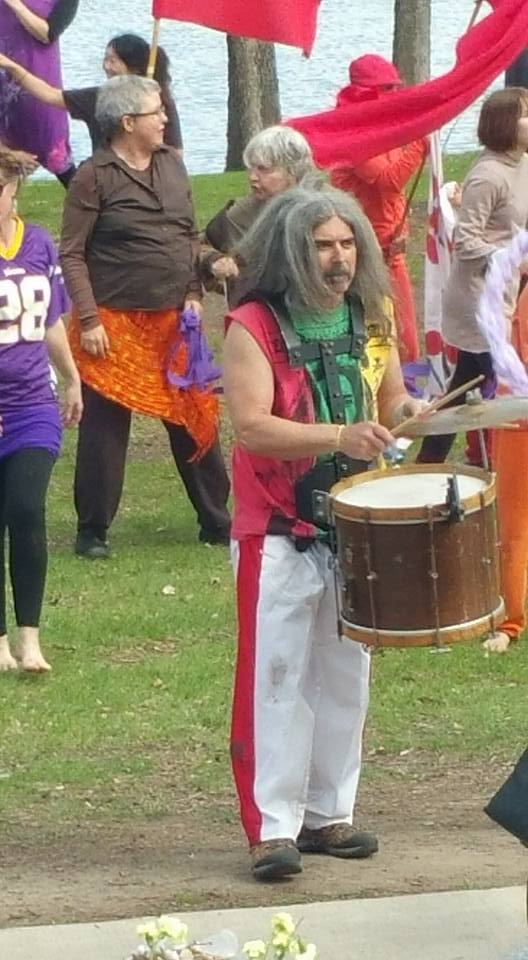
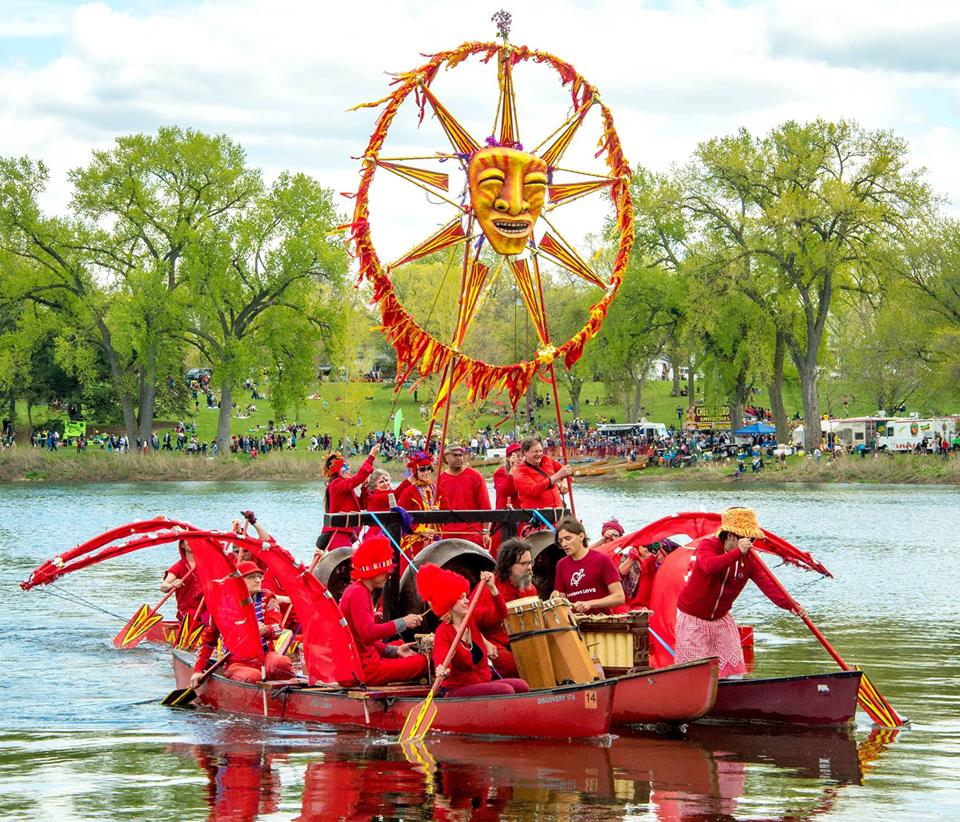
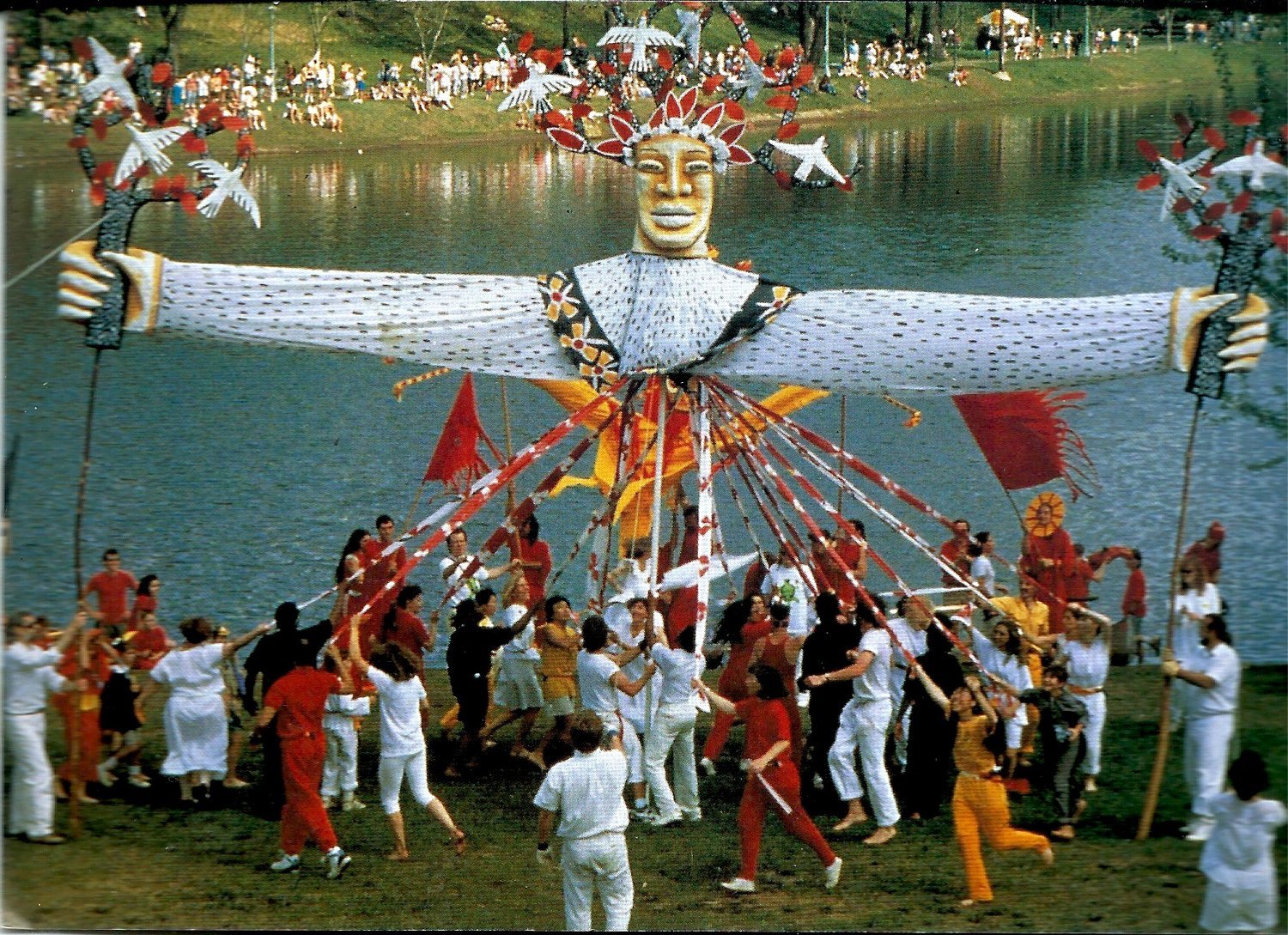
Messier 83 or M83, also known as the Southern Pinwheel Galaxy and NGC 5236, is a barred spiral galaxy approximately 15 million light-years away in the constellation borders of Hydra and Centaurus. Nicolas-Louis de Lacaille discovered M83 on 17 February 1752 at the Cape of Good Hope. Charles Messier added it to his catalogue of nebulous objects (now known as the Messier Catalogue) in March 1781.
It is one of the closest and brightest barred spiral galaxies in the sky, and is visible with binoculars.It has an isophotal diameter at about 36.24 kiloparsecs (118,000 light-years). Its nickname of the Southern Pinwheel derives from its resemblance to the Pinwheel Galaxy (M101).
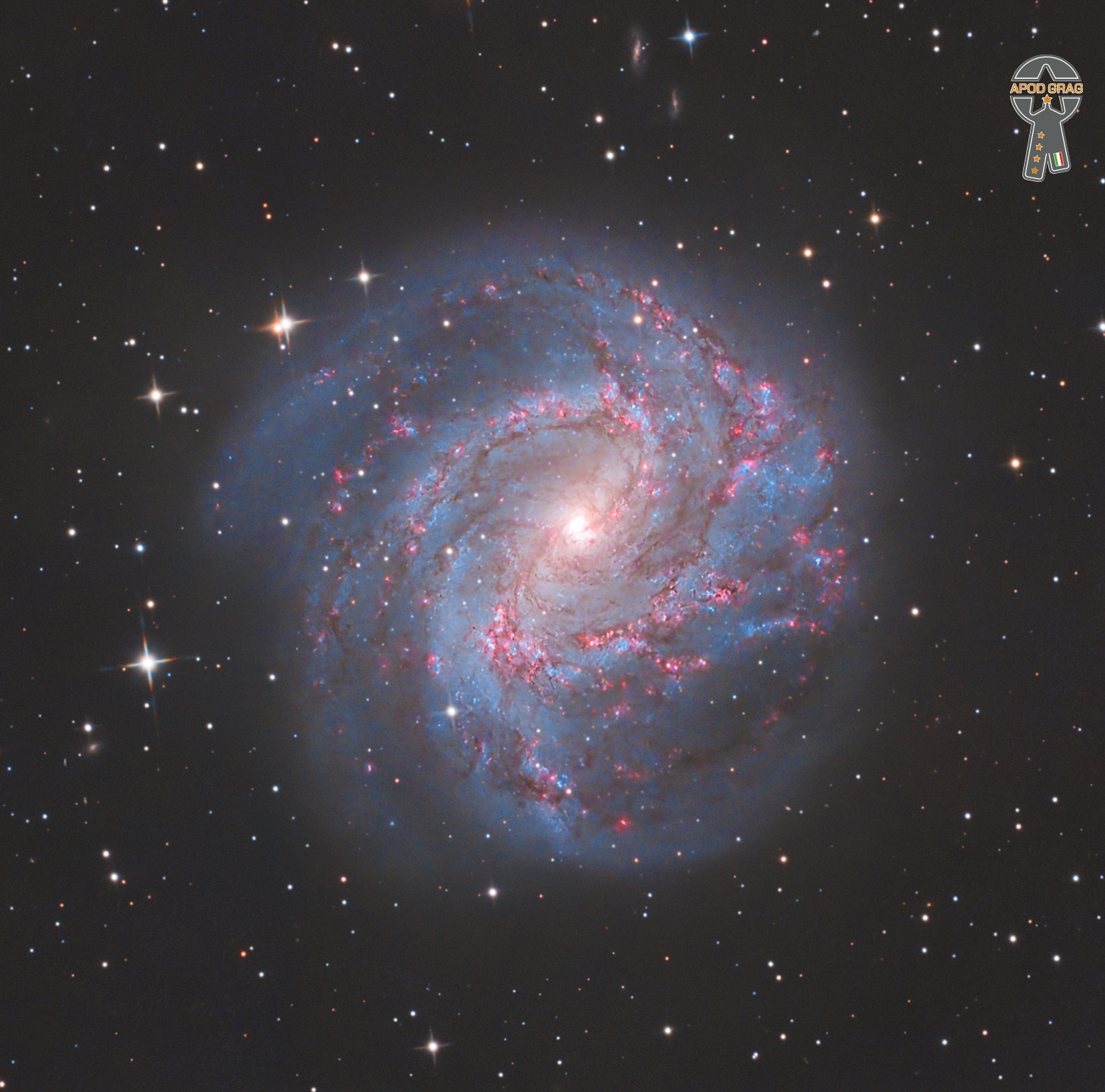
Adolphe Paul Barbarin (May 5, 1899 – February 17, 1969) was an American jazz drummer from New Orleans.
Barbarin grew up in New Orleans in a family of musicians, including his father Isidore, three of his brothers (including Louis), and his nephew (Danny Barker). He was a member of the Silver Leaf Orchestra and the Young Olympia Band. He moved to Chicago in 1917 and worked with Freddie Keppard and Jimmie Noone. From 1925–1927, he was a member of King Oliver‘s band.
During the following year, he moved to New York City and played in Luis Russell‘s band for about four years. He left Russell and worked as a freelance musician, but he returned to Russell’s band when it supported Louis Armstrong. For a brief time beginning in 1942, he worked for Red Allen‘s sextet, with Sidney Bechet in 1944 and Art Hodes in 1953. In 1955, he founded the Onward Brass Band in New Orleans. He spent the rest of his life as the leader of that band.
Barbarin died on February 17, 1969, while playing snare drums during a Mardi Gras parade. Record producer Al Rose said that his funeral “attracted one of the great mobs in New Orleans funeral history.
more...Stanley Cowell (May 5, 1941 – December 17, 2020) was an American jazz pianist and co-founder of the Strata-East Records label.
Cowell was born in Toledo, Ohio. He began playing the piano around the age of four, and became interested in jazz after seeing Art Tatum at the age of six. Tatum was a family friend.
After high school, Cowell studied classical piano with Emil Danenberg at Oberlin Conservatory of Music He included “Emil Danenberg” in his 1973 suite “Musa: Ancestral Dreams”. During his time at Oberlin, he played with jazz multi-instrumentalist Roland Kirk, which proved to be formative. He went on to receive a graduate degree in classical piano from the University of Michigan. He moved to New York in the mid-1960s.
more...J. B. Lenoir March 5, 1929 – April 29, 1967) was an American blues guitarist and singer-songwriter, active in the Chicago blues scene in the 1950s and 1960s.
Lenoir was born in Monticello, Mississippi. His full given name was simply “J. B.”; the letters were not initials. Lenoir’s guitar-playing father introduced him to the music of Blind Lemon Jefferson, which became a major influence. During the early 1940s, Lenoir worked with the blues artists Sonny Boy Williamson II and Elmore James in New Orleans. He was later influenced by Arthur Crudup and Lightnin’ Hopkins.
In 1949, he moved to Chicago, where Big Bill Broonzy helped introduce him to the blues community. He began to perform at local nightclubs, with musicians such as Memphis Minnie, Big Maceo Merriweather, and Muddy Waters, and became an important part of the city’s blues scene. Lenoir began recording in 1951 for J.O.B. Records and Chess Records. His recording of “Korea Blues” was licensed to and released by Chess, as having been performed by J. B. and his Bayou Boys. His band included the pianist Sunnyland Slim, the guitarist Leroy Foster, and the drummer Alfred Wallace.
more...Messier 77 (M77), also known as NGC 1068 or the Squid Galaxy, is a barred spiral galaxy in the constellation Cetus. It is about 47 million light-years (14 Mpc) away from Earth. Messier 77 was discovered by Pierre Méchain in 1780, who originally described it as a nebula. Méchain then communicated his discovery to Charles Messier, who subsequently listed the object in his catalog. Both Messier and William Herschel described this galaxy as a star cluster. Today, however, the object is known to be a galaxy.
The morphological classification of NGC 1068 in the De Vaucouleurs system is (R)SA(rs)b, where the ‘(R)’ indicates an outer ring-like structure, ‘SA’ denotes a non-barred spiral, ‘(rs)’ means a transitional inner ring/spiral structure, and ‘b’ says the spiral arms are moderately wound. Ann et al.(2015) gave it a class of SAa, suggesting tightly wound arms. However, infrared images of the inner part of the galaxy reveal a prominent bar not seen in visual light, and for this reason it is now considered a barred spiral.
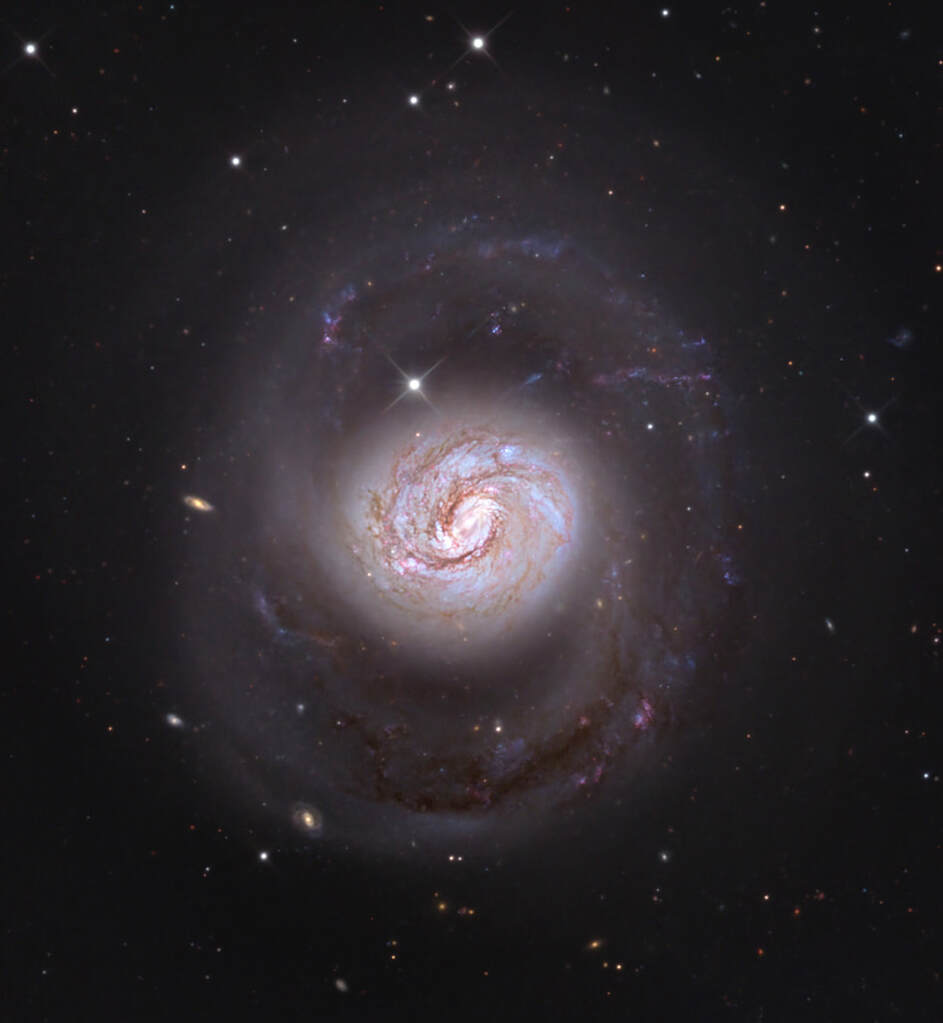
Donald Ernest Friedman (May 4, 1935 – June 30, 2016) was an American jazz pianist. He began playing in Los Angeles and moved to New York in 1958. In the 1960s, he played with both modern stylists and more traditional musicians.
Friedman was born on May 4, 1935, in San Francisco. Both of his parents immigrated to the United States: his father, Edward Friedman, was from Lithuania, and his mother, Alma Loew, was from Germany. He began playing the piano at the age of four, switching from classical music to jazz after his family moved to Los Angeles when he was fifteen. His early jazz piano influence was Bud Powell. Friedman briefly studied composition at Los Angeles City College.
more...Richard Anthony Monsour (May 4, 1937 – March 16, 2019), known professionally as Dick Dale, was an American rock guitarist. He was a pioneer of surf music, drawing on Middle Eastern music scales and experimenting with reverb. Dale was known as “The King of the Surf Guitar”, which was also the title of his second studio album.
Dale was one of the most influential guitarists of all time and especially of the early 1960s. Most of the leading bands in surf music, such as The Beach Boys, Jan and Dean and The Trashmen, were influenced by Dale’s music, and often included recordings of Dale’s songs in their albums. His style and music influenced guitarists such as Jimi Hendrix, Pete Townshend, Eddie Van Halen and Brian May.
He has been credited with popularizing tremolo picking on electric guitar, a technique that is now widely used in many musical genres (such as extreme metal, jazz fusion, etc.). His speedy single-note staccato picking technique was unrivaled until guitarists like Eddie Van Halen entered the music scene.
He is cited as one of the fathers of heavy metal for pushing the limits of amplification. Working together with Leo Fender, Dale also pushed the limits of electric amplification technology, helping to develop new equipment that was capable of producing thick and previously unheard volumes including the first-ever 100-watt guitar amplifier. Dale also pioneered the use of portable reverb effects.
The use of his recording of “Misirlou” by Quentin Tarantino in the film Pulp Fiction led to his return in the 1990s, marked by four albums and world tours. He was also nominated for a Grammy in the Best Rock Instrumental Performance category for the song “Pipeline” with Stevie Ray Vaughan. In “Rolling Stone’s 100 Greatest Guitarists of All Time”, Dale was ranked 31st in 2003 and 74th in the 2011 revision.
Dick Dale was born Richard Anthony Monsour in Boston, Massachusetts, on May 4, 1937. He was of Lebanese descent from his father, James, and of Polish–Belarusian descent from his mother, Sophia “Fern” (née Danksewicz).
more...Ronald Levin Carter (born May 4, 1937) is an American jazz double bassist. His appearances on 2,221 recording sessions make him the most-recorded jazz bassist in history. He has won three Grammy Awards, and is also a cellist who has recorded numerous times on that instrument. In addition to a solo career of more than 60 years, Carter is well-known for playing on numerous iconic Blue Note albums in the 1960s, as well as being the anchor of trumpeter Miles Davis‘s “Second Great Quintet” from 1963-1968.
Beginning with Where? in 1961, Carter’s studio albums as leader also include Uptown Conversation(1969), Blues Farm (1973), All Blues (1973), Spanish Blue (1974), Anything Goes (1975), Yellow & Green(1976), Pastels (1976), Piccolo (1977), Third Plane (1977), Peg Leg (1978), A Song for You (1978), Etudes(1982), The Golden Striker (2003), Dear Miles (2006), and Ron Carter’s Great Big Band (2011).
Carter was born in Ferndale, Michigan. At the age of 10, he started playing the cello, switching to bass while at Cass Technical High School. He earned a B.A. in music from the Eastman School of Music(1959) and a master’s degree in music from the Manhattan School of Music (1961).
more...Walter Maynard Ferguson CM (May 4, 1928 – August 23, 2006) was a Canadian jazz trumpeter and bandleader. He came to prominence in Stan Kenton‘s orchestra before forming his own big band in 1957. He was noted for his bands, which often served as stepping stones for up-and-coming talent, his versatility on several instruments, and his ability to play in a high register.
Ferguson was born in Verdun (now part of Montreal), Quebec, Canada. Encouraged by his parents, he started playing piano and violin at the age of four. At nine years old, he heard a cornet for the first time in his local church and asked his parents to buy one for him. When he was thirteen, he soloed with the Canadian Broadcasting Corporation Orchestra. He was heard frequently on the CBC, notably featured on a “Serenade for Trumpet in Jazz” written for him by Morris Davis. He won a scholarship to the Conservatoire de musique du Québec à Montréal where he studied from 1943 to 1948 with Bernard Baker.
more...Friday May 3rd 2024 6:00 p.m. Erev Shabbat Service Featuring Kohenet Elana Brody with Inbal Sharett-Singer, Jayson Rodovsky, Pete Whitman, Joel Sayles and mick laBriola.
more...
More Posts
- Bill Watrous Day
- Billie Pierce Day
- World Music with Alba Molina
- Daily Roots with King Tubbyhttps://www.youtube.com/watch?v=TOxKeKRIhhI
- The Cosmos with NGC 3256
- Tina Brooks Day
- Tal Farlow Day
- World Fusion with Frédéric Galliano & the African Divas
- Daily Roots with Scientist
- The Cosmos with Chamaeleon I
- Monty Alexander Day
- Grant Green Day
- Al Grey Day
- World Music with Faudel Belloua
- Daily Roots with Wayne Wade
- Diego Memorial Day
- The Cosmos with M17
- Peter Erskine Day
- Jerry Gonzales Day
- World Music with Nawang Khechog
